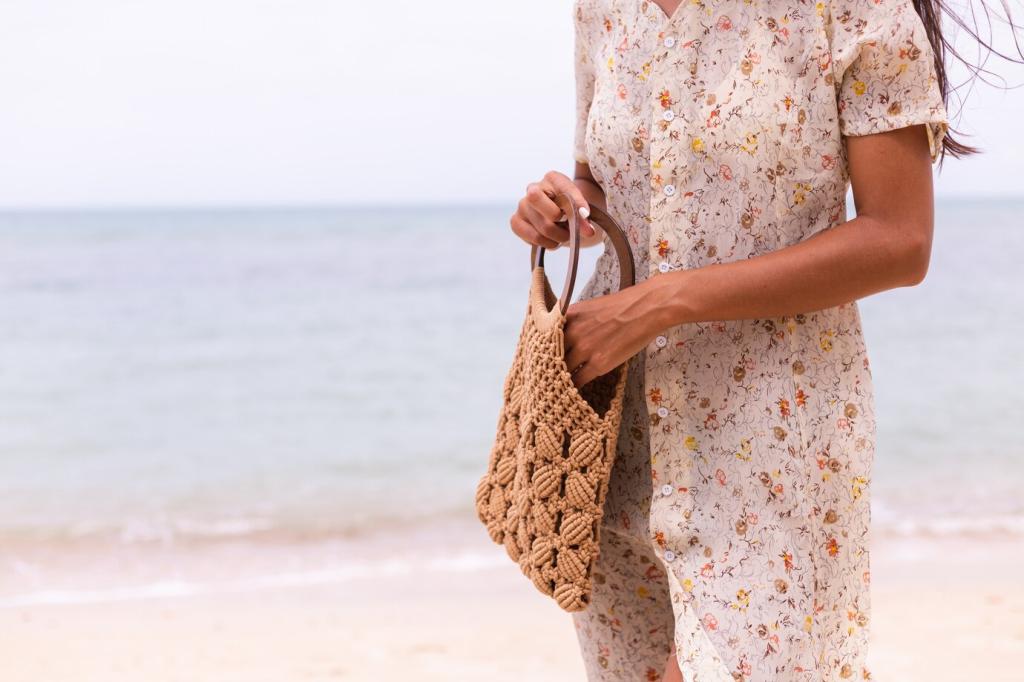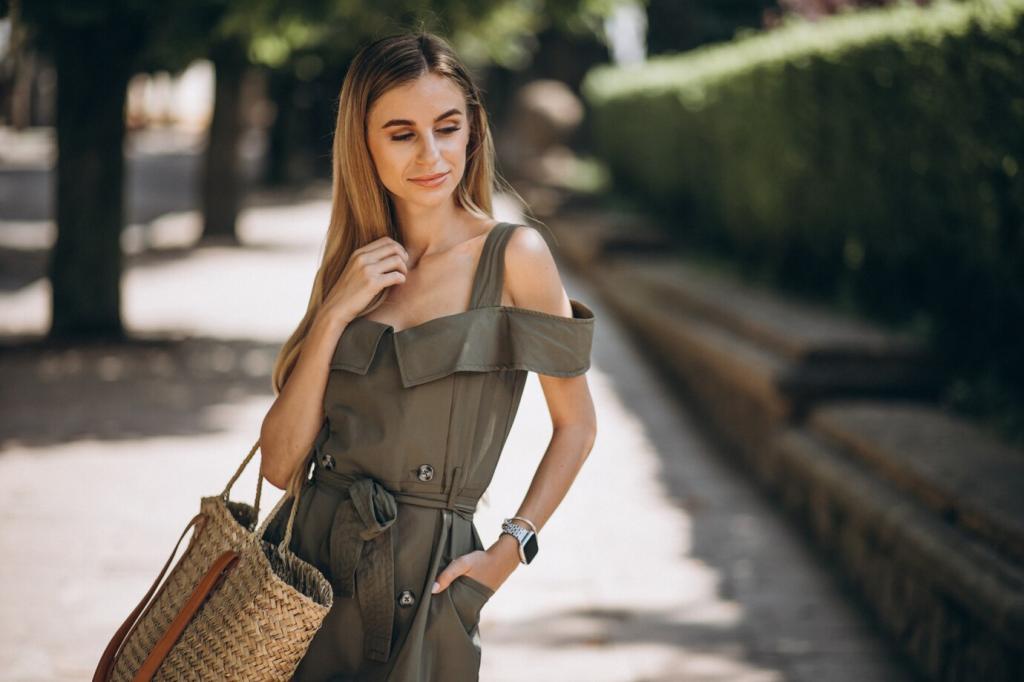
Eco-Friendly Wardrobe Essentials
Discover how to build a conscious closet with eco-friendly wardrobe essentials. This guide explores sustainable fabrics, ethical brands, responsible garment care, and ways to minimize fashion’s environmental impact. Whether you’re starting your sustainable style journey or seeking to refine your approach, these essentials will help you make thoughtful choices without sacrificing quality or aesthetics.
Sustainable Fabrics
Organic Cotton
Organic cotton is cultivated without the use of toxic pesticides or synthetic fertilizers, making it much less harmful to both farm workers and the earth. Compared to conventional cotton, organic production employs natural farming techniques such as crop rotation and composting, preserving soil health and conserving biodiversity. By choosing clothing made from certified organic cotton, shoppers support a less polluting textile industry and help reduce water waste. Additionally, organic cotton garments tend to be softer and less irritating to the skin, making them an excellent choice for everyday basics like t-shirts, undergarments, and denim.
TENCEL™ Lyocell
TENCEL™ Lyocell, derived from sustainably sourced wood pulp, stands out as an environmentally friendly fabric due to its closed-loop production process, in which water and solvents are reused at a rate of more than 99%. The result is a silky-smooth textile known for being breathable, strong, and biodegradable. Its gentle feel and temperature-regulating properties make it ideal for items like dresses, blouses, and even pajamas. When you choose TENCEL™ Lyocell, you’re opting for fashion made with less environmental strain and a lower overall carbon footprint.
Recycled Polyester
Recycled polyester, often made from post-consumer plastic bottles, gives new life to plastic waste and helps reduce reliance on virgin petroleum sources. Turning discarded plastics into thread for clothing uses less energy and emits fewer greenhouse gases than creating traditional polyester. This fabric is strong, quick-drying, and versatile, suitable for activewear, jackets, and even staple trousers. Garments crafted from recycled polyester are a prime example of circular fashion, closing the loop between waste and wearable goods while amplifying your wardrobe’s sustainability.
Ethical Brands
A transparent supply chain means a brand openly shares information about where and how its clothing is made. Transparency is vital for ensuring things like fair wages, safe workplaces, and responsible sourcing are actually being practiced. When brands communicate their processes, consumers gain confidence in their purchases, knowing their money supports integrity rather than exploitation. Informed shoppers can make better choices while encouraging more brands to adopt transparency and accountability.


The Classic White Shirt
No wardrobe is complete without a well-fitted white shirt. This staple garment pairs seamlessly with everything from tailored trousers to casual jeans, making it the ultimate example of timeless fashion. Choosing an eco-friendly version—crafted from organic cotton or TENCEL™—ensures that your essential piece has minimal environmental impact. Its versatility means you’ll return to it time and again, reducing the demand for disposable fashion.

Tailored Trousers
Tailored trousers serve as the cornerstone of any functional, sophisticated wardrobe, working effortlessly for both formal and casual occasions. Opting for quality fabrics like recycled wool or hemp ensures durability and environmental consideration. Well-made trousers transcend trends and withstand years of wear, easily mixed with sweaters, shirts, or blouses. Embracing this classic silhouette helps you create polished looks without succumbing to fast fashion.

Washing clothes less frequently, at lower temperatures, and with gentle detergents preserves fabric quality and lowers energy consumption. Air-drying instead of using a machine dryer not only conserves power but also minimizes wear and tear on fibers, helping your clothes last longer. These simple shifts in laundry habits contribute significantly to reducing your wardrobe’s environmental footprint.

Storing clothing thoughtfully can prevent fading, stretching, and other damage. Using padded hangers for dresses, folding knits to retain shape, and keeping garments away from direct sunlight all help maintain the integrity of your wardrobe essentials. Protecting your clothes in this way means fewer trips to the store for replacements and a lower contribution to textile landfill waste, supporting a more sustainable lifestyle.

Instead of discarding clothes at the first sign of wear, learn to mend minor issues like loose buttons or small tears. Repairing and upcycling extends the lifecycle of your garments, allowing for creative personalization and continued use. By dedicating time to simple fixes or embellishments, you prevent waste and reinforce your commitment to conscious fashion, all while expressing your individual style.
Minimalism and Mindful Consumption
Creating a capsule wardrobe means selecting a compact collection of versatile pieces that can be styled in multiple ways. This approach forces you to be intentional about what you own, ensuring each item complements others and serves a clear purpose. By investing in fewer, high-quality essentials, you reduce waste and avoid impulsive shopping, making your fashion choices more sustainable and enduring.

The Joy of Thrifting
Thrifting is a rewarding way to discover one-of-a-kind pieces that reflect your personal style. By shopping at thrift stores or online resale platforms, you help reduce demand for new production, minimize waste, and support local economies. Each successful thrift finds a story—sometimes it’s a designer gem from decades past; other times, it’s a simple, high-quality basic ready for a fresh start in your closet.

Vintage Quality and Craftsmanship
Vintage garments often boast a level of craftsmanship and durability difficult to find in today’s mass-produced fashion. Materials like pure wool, silk, or linen, along with hand-stitched details, set vintage pieces apart. Investing in well-made vintage not only adds character to your wardrobe, but also celebrates the rich history of fashion, encouraging longevity and mindful appreciation of the clothes you wear.

Circular Fashion and Waste Reduction
Second-hand shopping supports the concept of circular fashion, where clothing is recirculated rather than discarded. By purchasing pre-owned items, you actively participate in closing the loop, reducing landfill waste and shrinking the fashion industry’s overall carbon emissions. Each vintage or thrifted piece brought back into use is a small yet powerful act of environmental stewardship.
Green Accessories and Footwear
Plant-Based and Vegan Leathers
Innovative plant-based leathers created from materials like pineapple leaves, apple waste, or mushrooms offer sustainable alternatives to both animal and synthetic leathers. These options eliminate animal cruelty and harsh chemical treatments, providing chic, durable bags and shoes. Choosing plant-based leathers demonstrates how eco-conscious materials can meet both aesthetic standards and ethical considerations without compromise.
Recycled Jewelry and Upcycled Accessories
Jewelry and accessories made from recycled or upcycled materials bring new life to what might otherwise become waste. Artisans and brands now craft earrings, belts, and handbags using repurposed metals, textiles, or plastics. These unique pieces not only make a bold style statement but also raise awareness of resourcefulness and sustainable creativity in the fashion world.
Shoes with Sustainable Soles
Eco-conscious footwear brands utilize materials like recycled rubber, organic cotton, or biodegradable components to create sustainable shoes built for comfort and longevity. Brands focused on transparency ensure fair labor and responsible sourcing throughout their entire supply chain. Opting for shoes designed with sustainability in mind means every step you take supports both your personal values and the planet.
